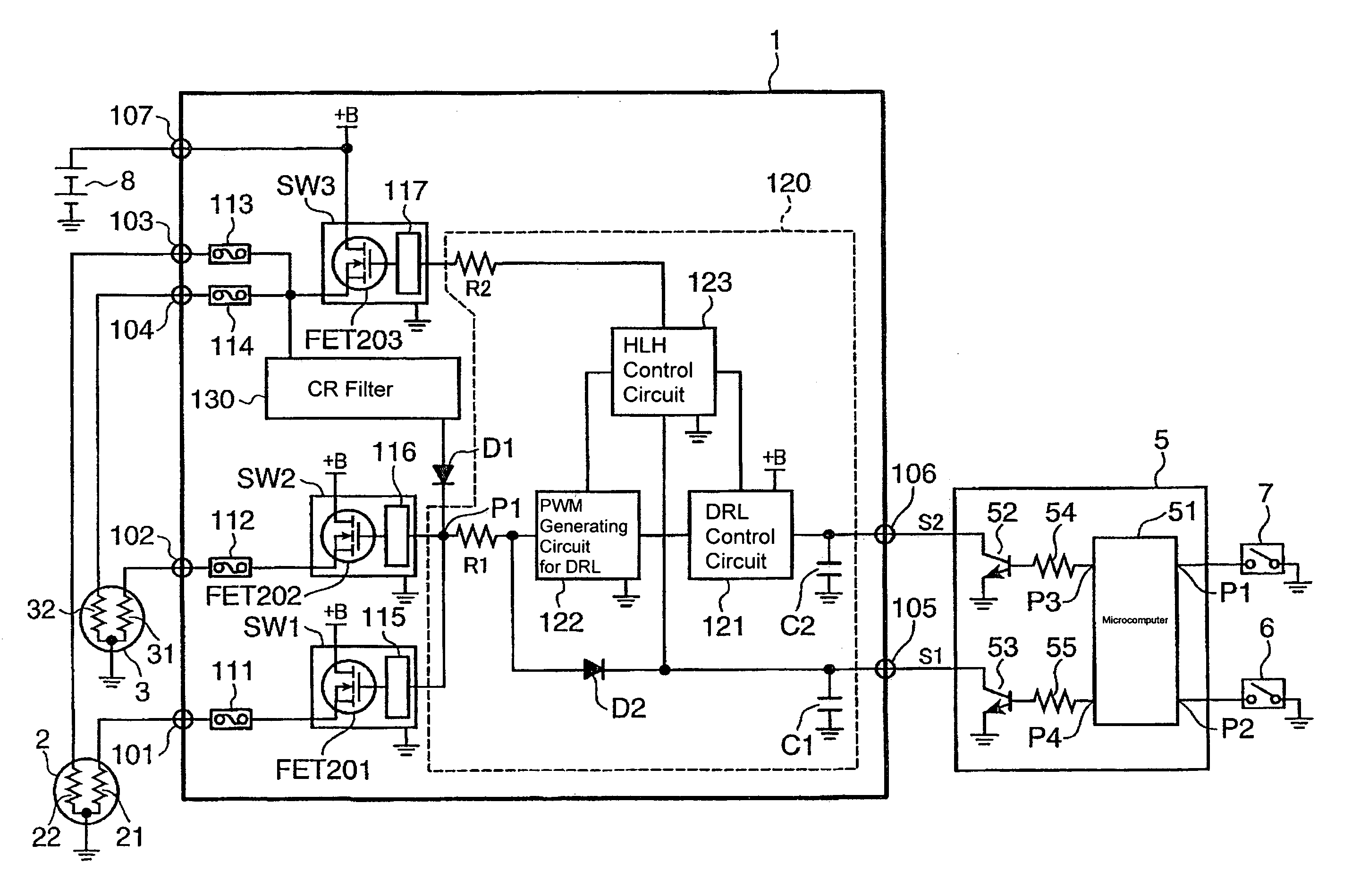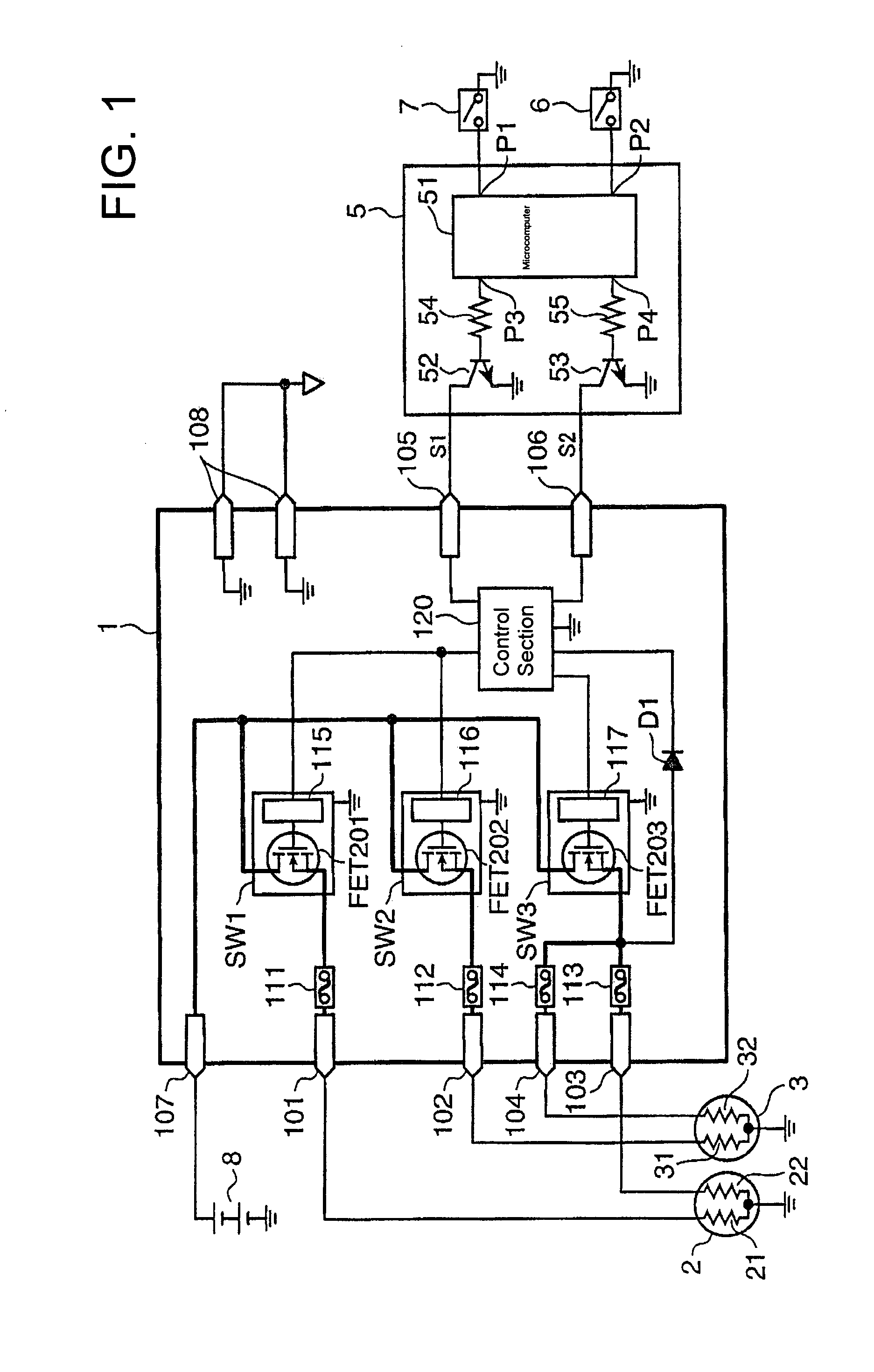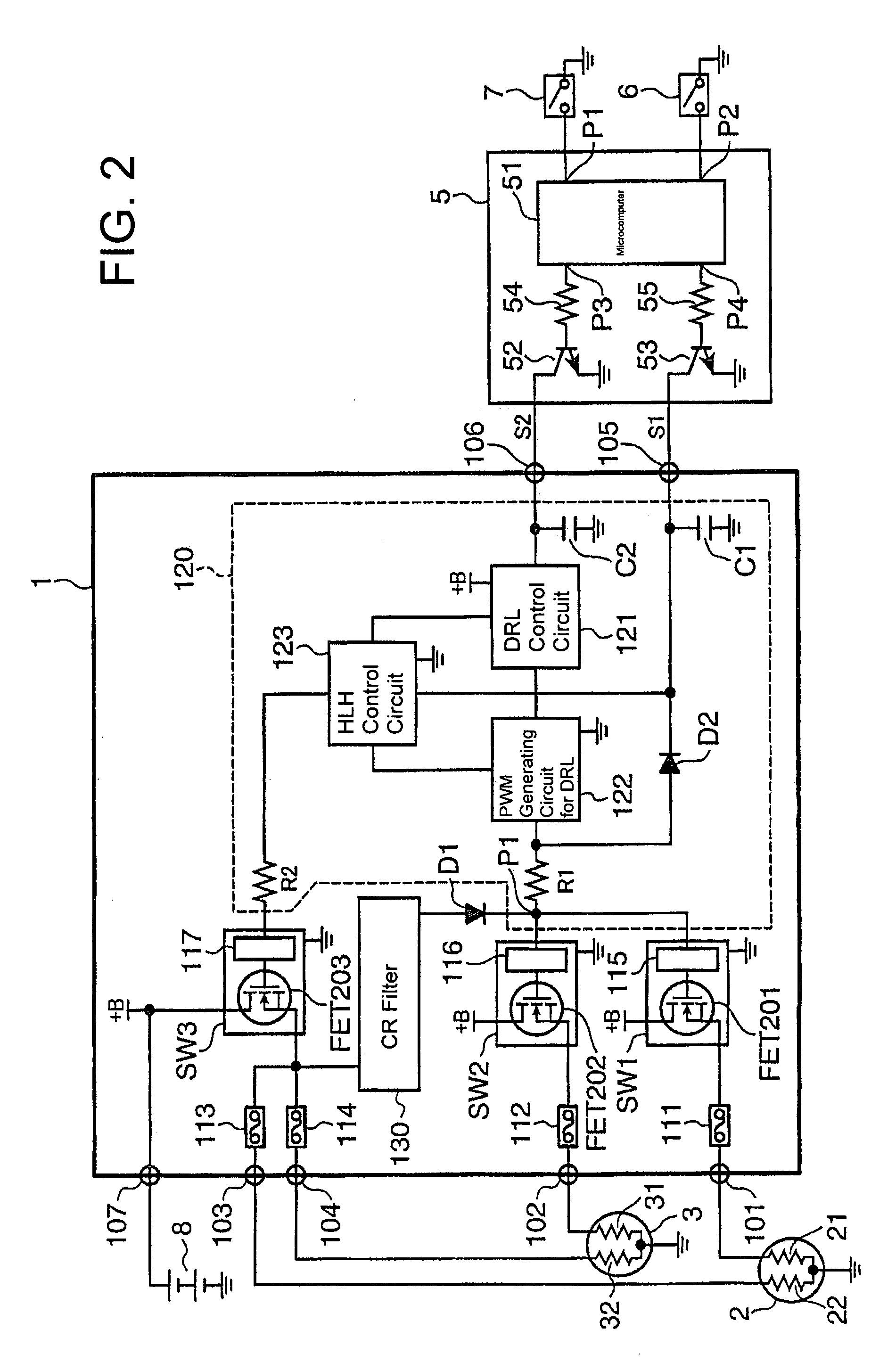Headlamp control circuit
a control circuit and headlamp technology, applied in electric vehicles, signalling/lighting devices, transportation and packaging, etc., can solve the problem that all headlamps are brought into a lights-out condition
- Summary
- Abstract
- Description
- Claims
- Application Information
AI Technical Summary
Benefits of technology
Problems solved by technology
Method used
Image
Examples
Embodiment Construction
[0026]The headlamp control system shown in FIG. 1 includes a headlamp control circuit 1, a left headlamp 2, a right headlamp 3, an ECU (Electric Control Unit) 5, operation switches 6 and 7, and a battery 8.
[0027]The left headlamp 2 includes a low-beam filament (first luminescent part) 21 and a high-beam filament (third luminescent part) 22. The right headlamp 3 includes a low-beam filament (second luminescent part) 31 and a high-beam filament (fourth luminescent part) 32. The ECU 5 includes a microcomputer 51, transistors 52 and 53, and resisters 54 and 55.
[0028]Signal input terminals P1 and P2 of the microcomputer 51 are connected to the operation switches 6 and 7, respectively. A signal output terminal P3 of the microcomputer 51 is connected through the resister 54 to a base of the transistor 52 and an emitter of the transistor 52 is connected to the ground. A signal output terminal P4 of the microcomputer 51 is connected through the resister 55 to a base of the transistor 53 and ...
PUM
 Login to View More
Login to View More Abstract
Description
Claims
Application Information
 Login to View More
Login to View More - R&D
- Intellectual Property
- Life Sciences
- Materials
- Tech Scout
- Unparalleled Data Quality
- Higher Quality Content
- 60% Fewer Hallucinations
Browse by: Latest US Patents, China's latest patents, Technical Efficacy Thesaurus, Application Domain, Technology Topic, Popular Technical Reports.
© 2025 PatSnap. All rights reserved.Legal|Privacy policy|Modern Slavery Act Transparency Statement|Sitemap|About US| Contact US: help@patsnap.com



